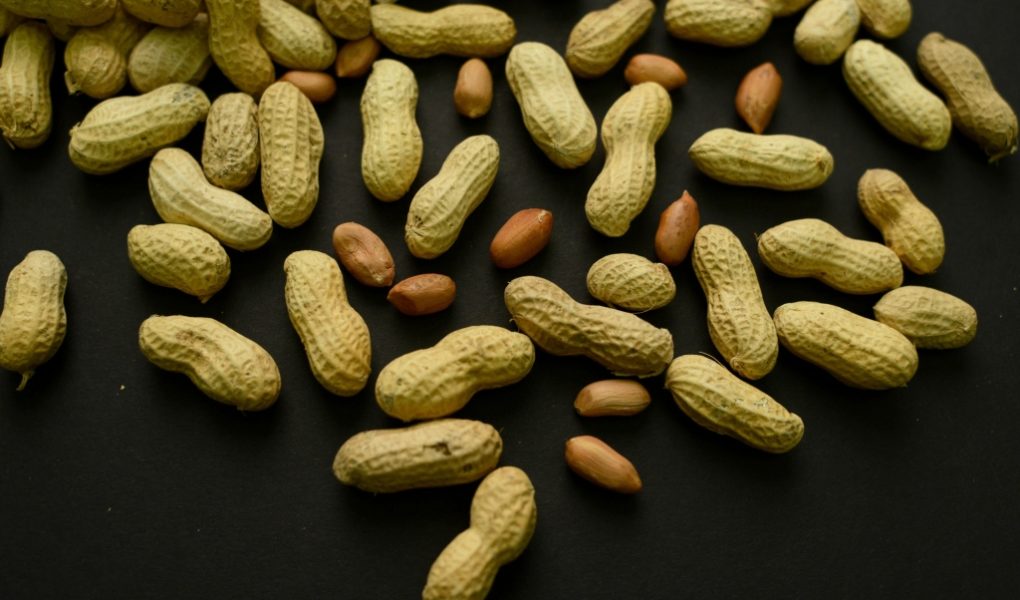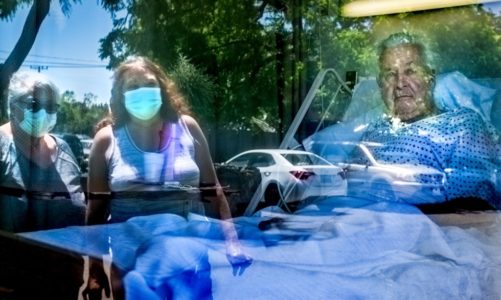
By Lauran Neergaard | Associated Press
WASHINGTON — An experimental skin patch is showing promise to treat toddlers who are highly allergic to peanuts — training their bodies to handle an accidental bite.
Peanut allergy is one of the most common and dangerous food allergies. Parents of allergic tots are constantly on guard against exposures that can turn birthday parties and play dates into emergency room visits.
There is no cure. The only treatment is for children 4 and older who can consume a special peanut powder to protect against a severe reaction.
The patch, named Viaskin, aims to deliver that kind of treatment through the skin instead. In a major test with youngsters ages 1 to 3, it helped those who couldn’t tolerate even a small fraction of a peanut to eventually safely eat a few, researchers reported Wednesday.
If additional testing pans out, “this would fill a huge unmet need,” said Dr. Matthew Greenhawt, an allergist at Children’s Hospital Colorado who helped lead the study.
About 2% of U.S. children are allergic to peanuts, some so severely than even a tiny amount can cause a life-threatening reaction. Their immune system overreacts to peanut-containing foods, triggering an inflammatory cascade that causes hives, wheezing or worse. Some youngsters outgrow the allergy but most must avoid peanuts for life and carry rescue medicine to stave off a severe reaction if they accidentally ingest some.
In 2020, the Food and Drug Administration approved the first treatment to induce tolerance to peanuts -– an “oral immunotherapy” named Palforzia that children ages 4 to 17 consume daily to keep up the protection. Aimmune Therapeutics’ Palforzia also is being tested in toddlers.
France’s DBV Technologies is pursuing skin-based immunotherapy as an alternative way to desensitize the body to allergens.
The Viaskin patch is coated with a small amount of peanut protein that is absorbed into the skin. A daily patch is worn between the shoulder blades, where toddlers can’t pull it off.
In the new study, 362 toddlers with peanut allergy first were tested to see how high a dose of peanut protein they could tolerate. Then they were randomly assigned to use the Viaskin patch or a lookalike dummy patch every day.
After a year of treatment, they were tested again and about two-thirds of the toddlers who used the real patch could safely ingest more peanuts, the equivalent of three to four, researchers concluded.
That compares to about a third of youngsters given the dummy patches. Greenhawt said they likely include children who are outgrowing the allergy.
As for safety, four Viaskin recipients experienced an allergic reaction called anaphylaxis that was deemed related to the patch. Three were treated with epinephrine to calm the reaction, and one dropped out of the study.
Some youngsters also accidentally ate peanut-containing foods during the study, and researchers said allergic reactions were less frequent among the Viaskin users than those wearing the dummy patches. The most common side effect was skin irritation at the patch site.
The findings were published in the New England Journal of Medicine.
The results “are very good news for toddlers and their families as the next step toward a future with more treatments for food allergies,” Dr. Alkis Togias of the National Institutes of Health, which wasn’t involved with the study, wrote in an accompanying editorial.
Togias cautioned that it’s too early to compare oral and skin treatments, but pointed to data suggesting each might have different pros and cons — raising the possibility that oral therapy might be stronger but also cause more side effects.
DBV Technologies has struggled for several years to bring the peanut patch to market. Last month the company announced the FDA wants some additional safety data for toddlers, and a separate study already is tracking longer treatment. A study of 4- to 7-year-olds also is underway.
The Associated Press Health and Science Department receives support from the Howard Hughes Medical Institute’s Department of Science Education. The AP is solely responsible for all content.
𝗖𝗿𝗲𝗱𝗶𝘁𝘀, 𝗖𝗼𝗽𝘆𝗿𝗶𝗴𝗵𝘁 & 𝗖𝗼𝘂𝗿𝘁𝗲𝘀𝘆: www.mercurynews.com
𝗙𝗼𝗿 𝗮𝗻𝘆 𝗰𝗼𝗺𝗽𝗹𝗮𝗶𝗻𝘁𝘀 𝗿𝗲𝗴𝗮𝗿𝗱𝗶𝗻𝗴 𝗗𝗠𝗖𝗔,
𝗣𝗹𝗲𝗮𝘀𝗲 𝘀𝗲𝗻𝗱 𝘂𝘀 𝗮𝗻 𝗲𝗺𝗮𝗶𝗹 𝗮𝘁 dmca@enspirers.com



